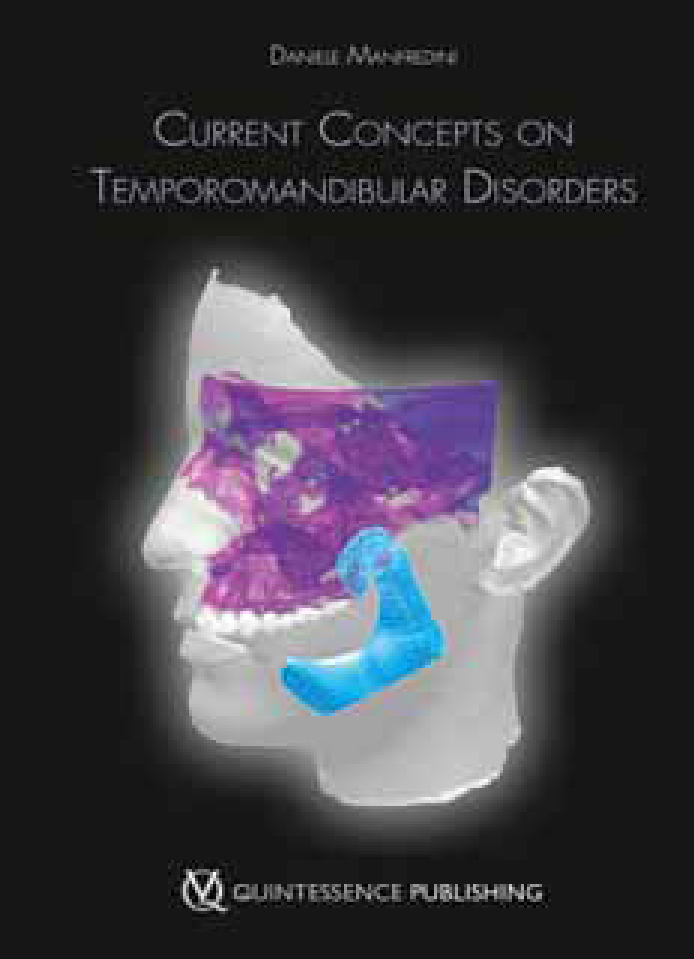Article
Current Concepts on Temporomandibular Disorders

This is a book which has resulted from the contributions of 45 authors with the aim of addressing current concepts on temporomandibular disorders. It is divided into four sections.
The first deals with anatomy of the temporomandibular joint and masticatory muscles, TMD classification and TMD as a chronic pain disorder. The second part deals principally with aetiology of temporomandibular disorders, subdivided into chapters on aetiology of muscle disorders, disc displacements, TMJ osteoarthrosis, bruxism and, finally, there is a section of future perspectives in TMJ pathophysiology. The third section is devoted to diagnosis, including clinical assessment, psychological assessment and imaging of the TMJ. This section then widens its remit to include an instrumental approach to diagnosis and further diversifies to include differential diagnosis of orofacial pain, headache and temporomandibular disorders, the relationship between otologic and TMD symptoms and examines malocclusion and body posture. The final section is on management of temporomandibular disorders but this is not a clinical treatise. This section follows the format of the rest of the book in being a literature review of current thoughts on procedures. The overall feeling of this book therefore is one of a large literature review and not of a clinical manual.
The reader gets the feel of 33 very different chapters written by different authors and to this extent it lacks some editorial continuity. This is demonstrated throughout the book by authors presenting different viewpoints. One example is that three different authors present very different viewpoints on the importance of bruxism and there are similar contradictions in relation to TMJ imaging. There is also a chapter devoted to bruxism and TMD but there is no reference made to tooth surface loss, even though this is illustrated in figures.
There is a strong emphasis throughout the book on psychosocial aspects of temporomandibular disorders, however again this is reflected as a literature view rather than giving the reader specific guidance of what is within and what is outwith the dentist's area of expertise.
The sections on classification of temporomandibular disorders reflect the difficulties that are commonly accepted. The author suggests that classifications for epidemiological and research use have little clinical relevance and that some clinical classifications are ‘not simple if even possible’.
If the book is to be revised at a later date, a useful addition would be a Glossary of Terms as several of the terms used will not be familiar to non-American readers. This is especially so in the earlier chapters.
The authors may have made a rod for their own back as ‘current concepts’ do not remain current for very long and in a book based on a literature review will need to be continually updated.
On a positive note, however, this book does provide a good ‘position statement’ and will bring the reader up-to-date as things stand at the time of writing and has a strong basis of evidence-based research.
